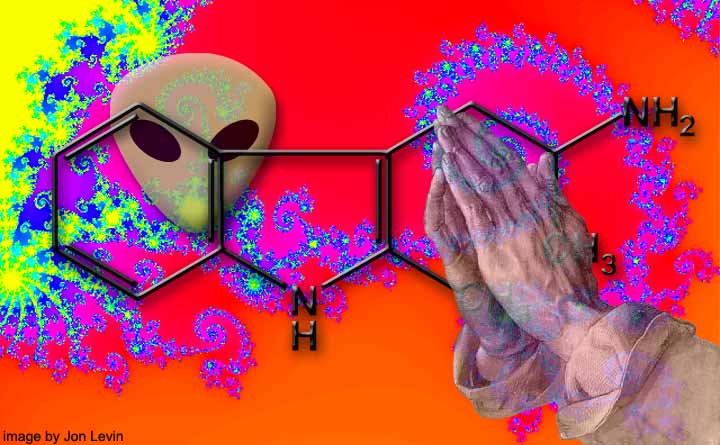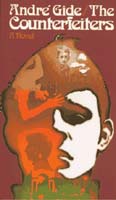 All of us have one ‘fence' or another. One of my favorite statistics is that an overwhelming percentage of Perot voters – I think the percentage was in the 80s -- believe in UFOs. Somehow says a lot about the sort of people who voted for the Texas billionaire, doesn't it? Because who believes in UFOs? As I tried to describe in an earlier
Zeek article, certain ideas (UFOs, prayer healing, etc.) are intellectual rubicons. To believe that 9/11 was engineered by Bush/Cheney is not like believing that a cut in the capital gains tax will stimulate the economy (though both strike me as about equally plausible). We can, within the parameters of a particular discourse, debate the merits of capital gains. But to hold a belief that the President of the United States is so utterly alien to conventional morality is to say something about how society is run. It is to question the discourse itself.
All of us have one ‘fence' or another. One of my favorite statistics is that an overwhelming percentage of Perot voters – I think the percentage was in the 80s -- believe in UFOs. Somehow says a lot about the sort of people who voted for the Texas billionaire, doesn't it? Because who believes in UFOs? As I tried to describe in an earlier
Zeek article, certain ideas (UFOs, prayer healing, etc.) are intellectual rubicons. To believe that 9/11 was engineered by Bush/Cheney is not like believing that a cut in the capital gains tax will stimulate the economy (though both strike me as about equally plausible). We can, within the parameters of a particular discourse, debate the merits of capital gains. But to hold a belief that the President of the United States is so utterly alien to conventional morality is to say something about how society is run. It is to question the discourse itself.
2.
Pondering these questions on the subway, I was struck by a School of Visual Arts ad which exhorted me to "Go As Far As Possible" (and presumably take a photography class). I realized that these questions of our skepticism, our fundamental ideological conservatism (imagine if you really entertained the possibility that prayer worked, the openness that it would require) -- these are new forms of an old question of limit that I've been asking myself for almost fifteen years.
In college, when I was busily exploring -- and, more often, only hoping to explore -- the boundaries of my own possibility, I became obsessed for a semester or two with questions of "how far" it was possible to go. How "far" could one wander into the wilderness, away from the safe, bourgeois place of respectability and convention, before one had gone "too far." At some point, with all boundaries destroyed, in a place where all is permitted, there is only a sort of anarchy of the self where nothing can be trusted. But to stay within too narrow a range is barely to live. Where is the line?
 I was guided in these thoughts by Andre Gide's The Counterfeiters, in which several characters move farther and farther from bourgeois safety and closer and closer to anarchic, amoral figures who Gide depicts as linked to (for better or for worse) Satan himself. The Counterfeiters follows several of these characters, all teenagers on the cusp of adulthood, as they interact with artists, bohemians, and underground figures who reject all conventional morality. Eventually, most of these characters return, in one way or another, to where they began. All are changed by the quest. Some do not survive it. While Gide suggests that the wandering of the prodigal son is a necessary stage in our human growth, he seems to say that ultimately there must be some sort of in-between zone, or possibly a dynamic oscillation, where zealous living is possible but where there are still some limits to our actions. Among many metaphors in the book that explain the principle, one that always stuck
with me is a description of a certain kind of fish that can only survive in brackish water, at the juncture of the fresh water of the river and the salt water of the sea. Too much salt, or too little, and the fish would die.
I was guided in these thoughts by Andre Gide's The Counterfeiters, in which several characters move farther and farther from bourgeois safety and closer and closer to anarchic, amoral figures who Gide depicts as linked to (for better or for worse) Satan himself. The Counterfeiters follows several of these characters, all teenagers on the cusp of adulthood, as they interact with artists, bohemians, and underground figures who reject all conventional morality. Eventually, most of these characters return, in one way or another, to where they began. All are changed by the quest. Some do not survive it. While Gide suggests that the wandering of the prodigal son is a necessary stage in our human growth, he seems to say that ultimately there must be some sort of in-between zone, or possibly a dynamic oscillation, where zealous living is possible but where there are still some limits to our actions. Among many metaphors in the book that explain the principle, one that always stuck
with me is a description of a certain kind of fish that can only survive in brackish water, at the juncture of the fresh water of the river and the salt water of the sea. Too much salt, or too little, and the fish would die.
This question dominated my thinking for a long time. I saw it in Hamlet's "to be or not to be," in Virginia Woolf's Mrs. Dalloway, and of course, in my own life. How far was "too far"? What did it mean to be "far"? Far from what? Out where? How much can one "seize the day" or "suck the marrow out of life" before, like a mosquito who drinks too much blood, one simply explodes?



film politics music jay's head poetry art josh ring fysche saddies about archive